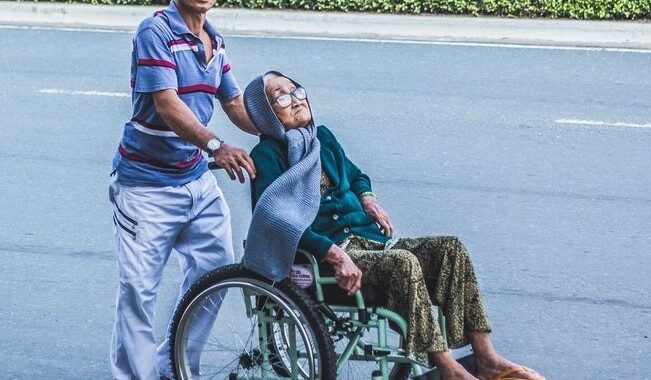These Two Metro Real Estate Markets are Nationally Recognized for Affordability and Supply

According to a statement from REALTORS.com, “Record low interest rates have made buying a home more affordable this year, but only two of the top 100 metros — Des Moines and Baton Rouge, La., — offer both affordability and an adequate supply of for-sale listings, according to a new analysis released today by realtor.com.”
The article notes that “homes listed for sale during the first quarter of 2020 were 8 percent more affordable compared to the first quarter of 2019, according to the REALTORS Affordability Distribution Score, a collaboration between realtor.com and the National Association of REALTORS, which measures the affordability of current for-sale homes overall as well as at different income levels. At the same time, finding a home in most markets is becoming more difficult as the inventory of homes per 1,000 households is down 53 percent from the 20-year average.
The Chief Economist for Realtor, Danielle Hale, stated that “The lack of affordable homes for sale has been the No. 1 issue facing homebuyers for the last several years. The COVID pandemic has eased the affordability side of the equation by lowering interest rates, but it has also prompted many sellers to delay listing their homes. As buyers return, we’ll need to see sellers come back for the housing market to normalize.”
Eight homes were listed for sale for every 1,000 households on average at the end of the first quarter, compared to the long-term historical average of approximately 17 listings per 1,000 households.
Based on the analysis of the top 100 metros in the United States, only two cities had more than 10 active listings per 1,000 households and an affordability score of at least 1.00, making them, according to the company, “affordable to households at wide a variety of income levels and relatively well-supplied.” Those two cities are Des Moines, Iowa and Baton Rouge, Louisiana, with 10.9 and 11.7 listings per 1,000 households and affordability scores of 1.03 and 1.00, respectively.
Four additional metros — Atlanta, Virginia Beach, Va., Jacksonville, and Lakeland, Fla., — had at least 10 active listings per 1,000 households and an affordability score of (at a minimum) 0.80, making them relatively affordable.
In conclusion, REALTOR noted that “several historically affordable metros — Buffalo and Rochester, N.Y., Columbus, Ohio, Springfield, Mass., and Harrisburg, Pa. — have seen their listings dry up, in part due to the COVID pandemic. At the low end, Buffalo had 2.5 listings per 1,000 households and Harrisburg had 3.6 listings per 1,000 households at the high end.”
Q1 2020 affordable markets
|
Metro |
Active |
Number of |
Listings Per |
Current |
Median |
Affordability |
|
Des Moines-West Des Moines, Iowa |
3,026 |
277,780 |
10.9 |
0.63 |
$269,800 |
1.03 |
|
Baton Rouge, La |
3,782 |
323,455 |
11.7 |
0.68 |
$248,800 |
1.00 |
|
Atlanta-Sandy Springs-Roswell, Ga. |
37,351 |
2,245,003 |
16.6 |
0.96 |
$325,050 |
0.89 |
|
Virginia Beach-Norfolk-Newport News, Va-N.C. |
7,252 |
676,056 |
10.7 |
0.62 |
$316,050 |
0.89 |
|
Jacksonville, Fla |
8,348 |
620,914 |
13.4 |
0.78 |
$311,545 |
0.83 |
|
Lakeland-Winter Haven, Fla. |
2,991 |
269,066 |
11.1 |
0.64 |
$235,050 |
0.87 |
|
* As of May 2 |
|
**Per 1,000 households |
Methodology: According to a statement, “The REALTORS Affordability Distribution Curve and Score is a NAR and realtor.com data series designed to examine affordability conditions at different income percentiles for all active inventory on the market. The Affordability Distribution Curve examines how many listings are affordable to those in a particular income percentile. The Affordability Score varies between zero and two and is a calculation that is equal to twice the area below the Affordability Distribution Curve on a graph. A score of one or higher generally suggests a market where homes for sale are more affordable to households in proportion to their income distribution.”



 Practical Recommendations for Losing Weight
Practical Recommendations for Losing Weight  Take a Breath
Take a Breath  Can Stories Change the World?
Can Stories Change the World?  Enhance Your Identity When Caregiving – Grow Stronger, Not Embittered
Enhance Your Identity When Caregiving – Grow Stronger, Not Embittered  Executive Perspectives on Staying Focused Amid Political Noise
Executive Perspectives on Staying Focused Amid Political Noise  Your Unbreakable Spirit
Your Unbreakable Spirit